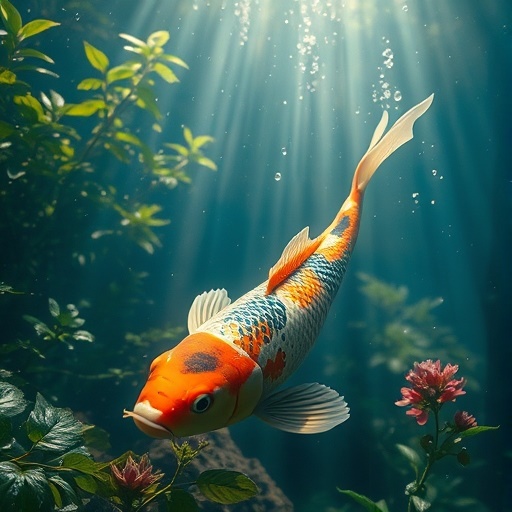Koi fish, often seen gliding gracefully through ponds and water gardens, are more than just ornamental fish. These colorful creatures are deeply embedded in Japanese culture and have earned a revered place in both art and symbolism. With their vivid hues and serene movements, koi represent qualities such as perseverance, strength, and good fortune. In this article, we will explore the captivating history, symbolism, and care involved in raising koi fish.
A Rich History of Koi
The origin of koi fish dates back over 2,000 years to ancient China, where the carp was bred for its strength and resilience. It was the Chinese who first began cultivating different varieties of carp, but it was the Japanese who refined the art of koi breeding, making the fish synonymous with their culture.
The first ornamental koi were developed in Japan in the early 19th century in the Niigata region. Japanese farmers selectively bred the fish for their vibrant colors, which ranged from deep reds and oranges to pure whites and blacks. Over time, different varieties of koi emerged, each with distinct patterns and colorations. The most famous among these are the Kohaku (white with red markings), Taisho Sanke (white with red and black markings), and Showa Sanke (black with red and white markings).
Symbolism and Meaning
In Japan, koi are more than just beautiful fish; they carry deep symbolic meanings. One of the most widely known legends associated with koi is the story of a koi that swam upstream and transformed into a dragon after leaping over the Dragon Gate waterfall. This tale symbolizes perseverance, as the koi had to overcome strong currents to achieve its goal. Thus, koi are seen as a symbol of determination, strength, and the ability to overcome adversity.
Koi also represent good luck and prosperity. In fact, many people in Japan and other parts of Asia believe that having koi in their garden or pond will bring wealth and success. The koi’s upward swimming motion is thought to symbolize the pursuit of one’s goals and ambitions, and it is often said that koi bring positive energy to the home.
In addition to their strength and good fortune associations, koi are often linked to family and longevity. The Japanese celebrate the annual “Tango no Sekku,” or Children’s Day, with colorful koi-shaped flags, representing the wish for children to grow strong, healthy, and successful.
Caring for Koi Fish
Raising koi requires careful attention and dedication. These fish can live for decades, with some reaching ages of 30 years or more, so they are considered long-term companions for their owners. One of the most important aspects of koi care is maintaining a clean and healthy environment. Koi thrive in well-maintained ponds with proper filtration systems, as they produce a significant amount of waste. It is essential to keep the water clean and free of harmful chemicals.
Koi fish require a specific water temperature to remain healthy. Ideally, the water temperature should range between 15 to 25 degrees Celsius (59 to 77 degrees Fahrenheit). During the colder months, koi should be sheltered from extreme cold, as they are susceptible to temperature shock.
Feeding koi is another key element in their care. Koi are omnivores and thrive on a varied diet that includes high-quality koi food, vegetables, and even some fruits. However, it’s crucial to feed them the right amount to avoid overfeeding, which can lead to water quality issues.
Koi in Art and Culture
Koi are not only beloved as pets but are also a prominent subject in Japanese art and culture. Their elegant movements and vibrant colors have inspired many artists, from traditional woodblock prints to contemporary works of art. The koi is frequently depicted in Japanese tattoos, symbolizing strength, courage, and the ability to overcome obstacles.
Moreover, koi ponds are a central feature in many Japanese gardens, creating a tranquil atmosphere where people can relax and meditate. The peaceful interaction of the koi with the water exemplifies the Japanese appreciation for harmony between nature and human life.
Conclusion
Koi fish are much more than just ornamental pond dwellers. They embody perseverance, strength, and good fortune and have become cultural icons in Japan and around the world. Raising koi requires commitment and care, but for those who take on the challenge, the rewards are plentiful. Not only do koi bring beauty and tranquility to any setting, but they also serve as enduring symbols of personal growth and the pursuit of happiness. Whether as a pet or a symbol of cultural heritage, koi continue to captivate people across the globe, enriching both their lives and the environments they inhabit.

